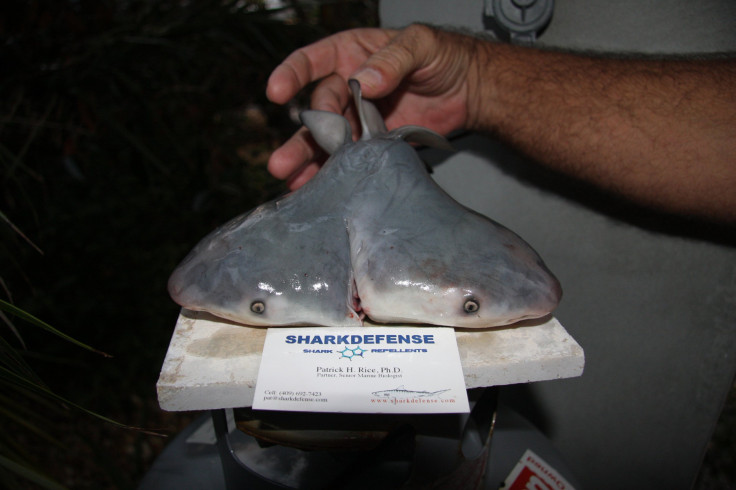Two-Headed Shark Just One Of Many Cases Of Dicephalic Animals In Nature [PHOTOS]
Here’s something to make you stay out of the water this summer: Scientists have confirmed that what appeared to be a two-headed shark is, in fact, a two-headed shark.

In a paper published Monday in the Journal of Fish Biology, Michigan State University and Florida Keys Community College scientists described what is thought to be the first bull shark discovered with “dicephalia” – the fancy term for “having two heads.”
“This is certainly one of those interesting and rarely detected phenomena,” MSU researcher Michael Wagner said. “It’s good that we have this documented as part of the world’s natural history, but we’d certainly have to find many more before we could draw any conclusions about what caused this.”
The shark in question was cut out of its mother’s womb by a fisherman, and died shortly after removal. There’s little chance that the animal would have survived in the wild. Upon close inspection with MRI machinery, Wagner and his colleagues found that the shark had two heads, two hearts and two stomachs, fusing together below into a single tail:

Given the fact that the shark was pulled off the coast of Florida in the Gulf of Mexico, you might suspect that pollution – possibly from the Deepwater Horizon accident – is responsible for this specimen. But there’s no evidence for that yet.
“Making that leap is unwarranted,” Wagner warned. “We simply have no evidence to support that cause or any other.”
Dicephaly results from the failure of identical twins to fully split off from each other while developing in the womb. Other kinds of sharks have been fished out of the sea sporting two heads, including blue sharks and rope sharks. And dicephaly has been found in a number of other creatures too, from snakes: [Warning: Some of these photos might be hard to forget.]

To turtles:

To calves:

In humans, there are multiple instances of conjoined dicephalic twins:

There's another kind of condition called diprosopus, where animals are born literally two-faced, with certain features duplicated. Unlike two-headedness, this condition does not result from partially fused twins; it stems from problems early on in embryonic development connected to a protein signal called sonic hedgehog homolog, or SHH.

The condition is rare, yet occurs often enough in cats to earn them the special title of "Janus cats," after the two-faced Roman god. Janus cats often die young, but one, dubbed 'Frank and Louie' by his Massachusetts owners, turned 12 years old in 2011.

© Copyright IBTimes 2025. All rights reserved.





















